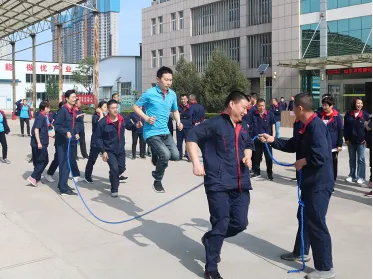Climbing Ropes - A Concise History of Materials & Construction
Nylon ropes solved the strength and elasticity problems of laid ropes; the remaining problems related to durability and handling (twisting). The kernmantle design solved these problems using a unique “core and shell” design [1].
The Kern – The Core of a Modern climbing rope
Construction begins with nylon filaments being spun into yarn. The yarns are twisted to form a ply, several of which are twisted together to form a bundle. Several of these bundles form the core, or kern of the rope.
The Mantle – The Shell of a Modern Climbing Rope
A nylon sheath (mantle) is then braided around the core (Figure 2). A number of variables influence the final properties of the rope, including:
-
the number of yarns
-
amount of twist at each step
-
tightness of sheath weave, and
-
the sheath braid
As an example, the cores of dynamic ropes are heavily twisted to produce stretchy ropes that can absorb the impact of a leader fall, while the cores of static (rigging) ropes are untwisted to yield a rope with little stretch. Typical kernmantle climbing and rigging rope diameters range from 8 - 12 mm [1].
Climbing Rope Testing Standards
Modern climbing ropes are manufactured and tested to multiple standards, including those of the European Norm (EN) and the International Climbing & Mountaineering Federation (UIAA). As a results, all rated, commercial climbing ropes produced by reputable manufacturers are quite strong.
Single climbing ropes must be capable of withstanding a minimum of five drops in a standardized UIAA drop test, which simulates a “worst-case” climbing fall using an 80-kilogram weight. The impact force the rope transmits to the simulated “climber” may not exceed 12 kN, a number determined via extensive testing on paratroopers by the United States Army [1]. Catastrophic internal injury to a climber will occur well before a tensile failure of a modern rope!
How Climbing Ropes Break / Fail
Most modern rope failures are caused either by rope abrasion over a sharp edge, or from careless rope storage.
Inspect Climbing Rope to Prevent Abrasive Failure
Make sure to inspect your rope before use; retire it if you find sheath damage that extends to the core, of if you find a section of damaged core. Damaged core is often indicated by a “flat” spot in the rope that has little resistance to bending. Ropes and other soft goods are typically retired after five years of active use.
Careful Storage & Use Prevents Chemical Rope Failure
Extended exposure to UV radiation or hazardous chemicals can degrade and weaken the nylon fibers that compose the rope. Store ropes in a cool, dry and dark place like a closet or rope bag. Avoid setting ropes on pavement or asphalt, where leaking fluids from vehicles will accumulate. Wash your rope regularly using warm water and a mild soap; do not use strong cleaners or detergents.
Summary
The rope is an essential climbing tool and an instantly-recognizable symbol of climbing fraternity. A great amount of research and development has improved climbing rope technology from its humble beginnings in the golden age of alpinism to its advanced state today. With proper care, your climbing rope will give you many years of great experiences on the rock. Climb on!
How Are Climbing Ropes Made?
Have you ever thought about how a climbing rope is made? Have you ever seen the core of a climbing rope or played with the sheath and wondered what function those different parts serve? The video below—from the TV series How It’s Made—was filmed at the New England Ropes factory.
Note: The climbing rope portion goes up through 2:43. After that, the video covers marine ropes.
To make a climbing rope, three individual nylon strands are twisted together to form thicker yarn, and these pieces of yarn are used to create the white core of the rope. For the rope’s sheath, dozens of spools of nylon fiber unwind are twisted together to form colored yarn.
As several (roughly a dozen) strands of the thicker white yarn are brought together to form the core, strands of the colored sheath yarn are wound and braided around the series of white core fibers.
It’s the twisted nature of the core fibers that give dynamic climbing ropes the stretch that enables them to softly catch climbers’ falls (and keep us from getting whiplash or worse).
And in the video below, an employee from Sterling Rope walks us through the rope creation process on Sterling’s factory floor. Their process is similar to the New England Ropes process.
What are Climbing Ropes Made of?
When I first started climbing, I had a very hard time trusting the climbing rope. I knew that it had been engineered over many years for climbing. But once I got high off the ground, my mind started to wander about the rope. My hands and feet would start to sweat. I’d develop Elvis leg. And I’d have a hard time focusing on the climbing. Managing fear is an important aspect of climbing. To manage my fear of the rope, I researched it and did my best to understood what climbing ropes are made of.
I was surprised (and pleased!) to find how much research, engineering, and innovation there is in climbing ropes. The UIAA has a rigorous testing procedure for all ropes to ensure there no faulty ropes are going out to the public.
What are climbing ropes made of
Modern climbing ropes are made of nylon and polyamide materials that are both incredibly strong and durable. These nylon ropes have been a huge technological innovation for the sport. The modern climbing rope is also known as a kernmantel rope. There are two parts to this kind of rope: the core and the sheath.
A rope’s strength comes from the core. Which is tightly braided nylon strands. They kinda look like the double helix in DNA. The sheath is there to protect the core. It’s made of nylon and is the colorful shell of a rope. Sheaths come in different colors. And they can also be dry treated to protect the core from becoming waterlogged.
Dynamic Ropes Climbing
Modern climbing ropes are also known as a kernmantle rope. And the rope you climb with will also be known as a dynamic rope. This means that when a climber falls and the rope is weighted, the rope will stretch to absorb some of the force of the fall. All ropes have a property known as dynamic elongation, which is a percent that the rope will stretch when under load.
What is a kernmantle rope
In a kernmantle rope there are two components: the kern (or the core) and the mantel (the sheath):
Core (kern)
The core of the rope provides the tensile strength for the rope. The core provides our ropes with the ability to safely catch and hold a fall. The manufacturer will take tightly braided nylon strands that are twisted together. This double helix-like design gives our rope strength.
Sheath (mantle)
The sheath or mantel is made of nylon and provides abrasion resistance against the textured rocks we’re always climbing on. The rope will rub against and over rock at one point during its lifespan. And the sheath protects its core. When we look at a rope and see the color and pattern stitching, we are looking at the sheath.
Climbing ropes are made to be durable and the kernmantel design helps accomplish that. The kern and the mantle come together to form dynamic ropes!
Static Climbing Rope
A static rope is a rope that won’t stretch when under load. We say static because it refers to the amount the rope will stretch. We’ve already talked a lot about dynamic ropes, which are ropes that are built to stretch to reduce the force on our bodies.
But is there ever a case when you would want a rope with no stretch? We want the rope to stretch on a dynamic fall to absorb impact. But what if we wanted to keep the rope in the same place like in a top rope anchor?
At Great Falls Park there are plenty of trees and boulders for us to use to build our anchors. The Park Service forbids new bolts from being added so we make do with natural anchors. When setting up a top-rope anchor, you want the master point to be in the same spot. The anchor would not be effective if the rope stretch made the anchor sink six inches every time it was weighted. So we use a static rope when you do not want rope stretch! I love using about 110 feet of static line for building top-rope anchors. But static lines are also useful for rescues, hauling loads, and our top-rope anchors.
Twin Rope
A twin rope is a dual rope system. Both ropes must be clipped into every piece of protection (never separate the twins!) Twin ropes are thinner and are lighter, and can be tied together for long rappels.
One downside of twin ropes is that you need a tube-style device for belaying. Since the climber is tied into two ropes, your belay device must be able to handle two ropes at once.
Half Rope
A half rope is similar to a twin rope, but the rope can be clipped into alternating pieces of protection. Half ropes work best for wandering routes. By clipping the ropes into alternating pieces of protection, we can eliminate rope drag. Tie half ropes together for long rappels.
Just like twin ropes, the downside is that you must use the tube-style belay device. I personally prefer to belay and be belayed with assisted braking device for some extra peace of mind.
Single Climbing Ropes
The most common rope seen is the single rope. A single rope is exactly what the name implies: just one rope. A downside of the single rope system is that a second rope must be trailed to make a long rappel doable.
Half vs Twin Rope
There’s a lot of confusions surrounding half ropes vs twin ropes. To the naked eye, they do have one major thing in common. Both of these systems involve two ropes. You have to tie into both ropes while you’re climbing and your belayer will need to use a tube style device since they belay you on both ropes. These systems will have lighter ropes with thinner diameters which make them perfect for alpine climbing.
The major difference between half ropes and twin ropes is that when using twin ropes both ropes must be clipped into both pieces of protection. Half ropes can be clipped individually (alternating between pieces of protection or keeping the rope to right or left side.)
What is a bi-pattern climbing rope?
On a rope with a bi-pattern design, the two halves of the rope will have a different design. The rope has a consistent color scheme throughout, but the patterns will be altered. When the halfway point is reached during manufacturing, the manufacturer alters the sewing machine bobbins to create a new design.
What is a middle marker on a climbing rope?
For ropes that do not have bi-pattern, some manufacturers will put a center mark at the middle of the rope. Sterling Rope uses a water-based dye that is UIAA compliant for marking the middle of the rope. The middle mark should last as long as the sheath.
Climbing Rope Diameter
The diameter of the rope measures the rope’s thickness. Different climbing objectives warrant different diameters. Belay devices, such as the Petzl GriGri, can only operate with a certain range of rope diameter. Consult your user’s manual or manufacturer if you have questions.
When picking a rope, keep in mind that the rope’s weight will change based on the diameter you choose. A lighter rope will have a thinner diameter.
But there’s a trade-off. A larger diameter will last longer than a thinner diameter. Keep this in mind when you’re looking for a rope to be your workhorse vs. your redpoint rope.
Frequently Asked Questions
What is a dry treated rope?
A dry treated rope is when the rope’s sheath is bonded with water repellant particles. Dry treated ropes must pass a UIAA test to be certified as UIAA Dry.
What is the impact force of a fall on a climbing rope?
Impact Force is the kiloNewton force that the climber experiences, a lower number indicates less force on the climber, belayer and gear.
Why does my climbing rope have a recommended use?
Manufacturers give their opinion if the rope is best suited for gym climbing, alpine climbing or sport climbing.
What is a rock climbing rope’s sheath mass?
The sheath mass is represented by a percentage it tells us how much of the diameter is represented by the sheath.
How many UIAA Falls does a climbing rope go through?
The UIAA will test each rope at a fall factor of 1.77, they literally force the rope to catch a fall that has the 1.77 fall factor.
How much does a climbing rope weigh?
The weight of your rope is going to depend on the rope length and the rope’s weight per meter which you will feel the higher and higher you climb.
What is dynamic elongation?
Dynamic Elongation is the amount of rope stretch created during a dynamic fall and is denoted by a percent. Rope stretch absorbs the force of a fall, protecting the climber from feeling a high force on their body.
What is static elongation?
Static elongation is represented by a percent, and it shows the amount of rope stretch caused when a 80kg (176 pounds) weight is hanging off of it. Climbing scenarios where we see a static elongation would be top roping or while hauling.
What’s the difference between dynamic and static ropes?
Dynamic climbing ropes are designed to stretch when there is force while a static rope will not stretch.
What types of rock climbing ropes are there?
There are four different types of climbing ropes: static, twin, half, and single.










